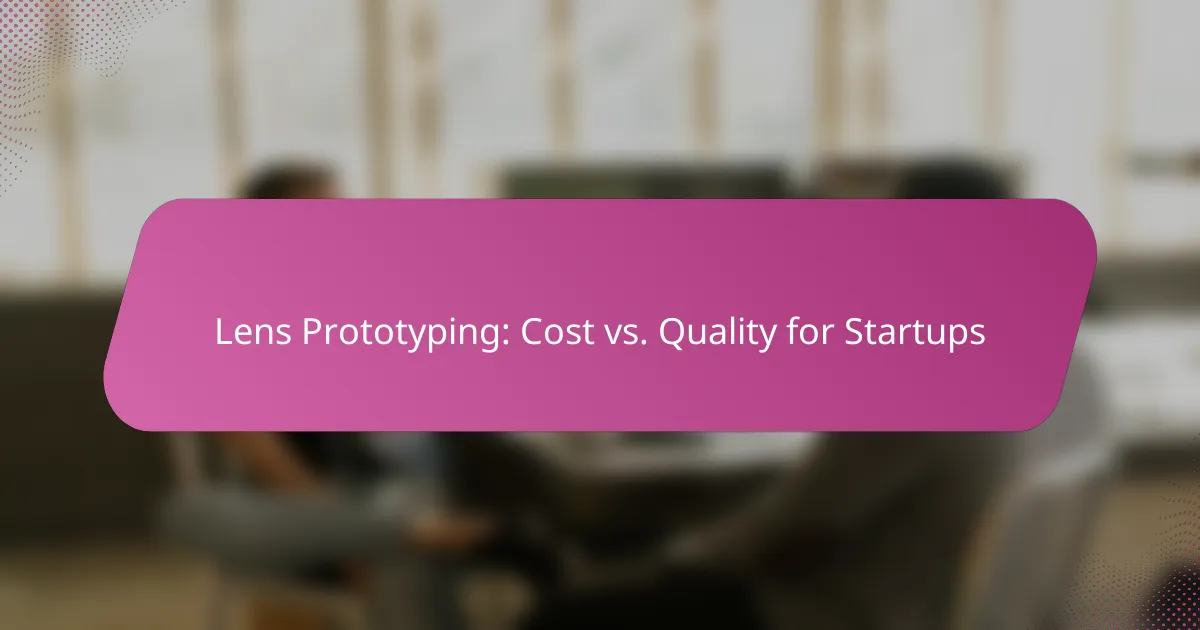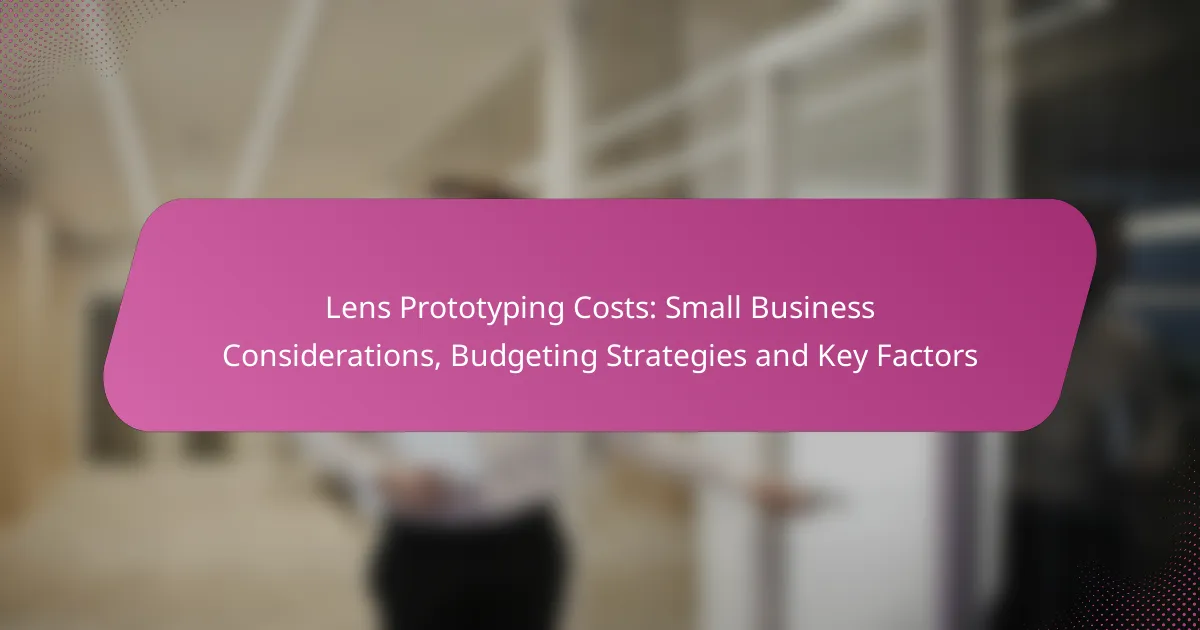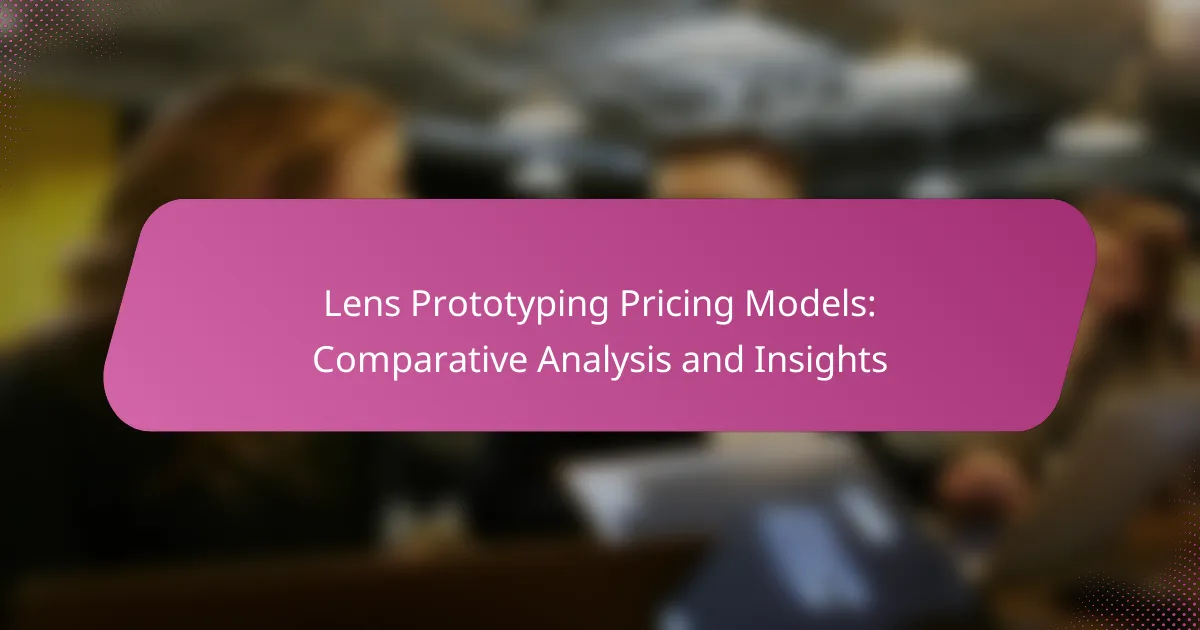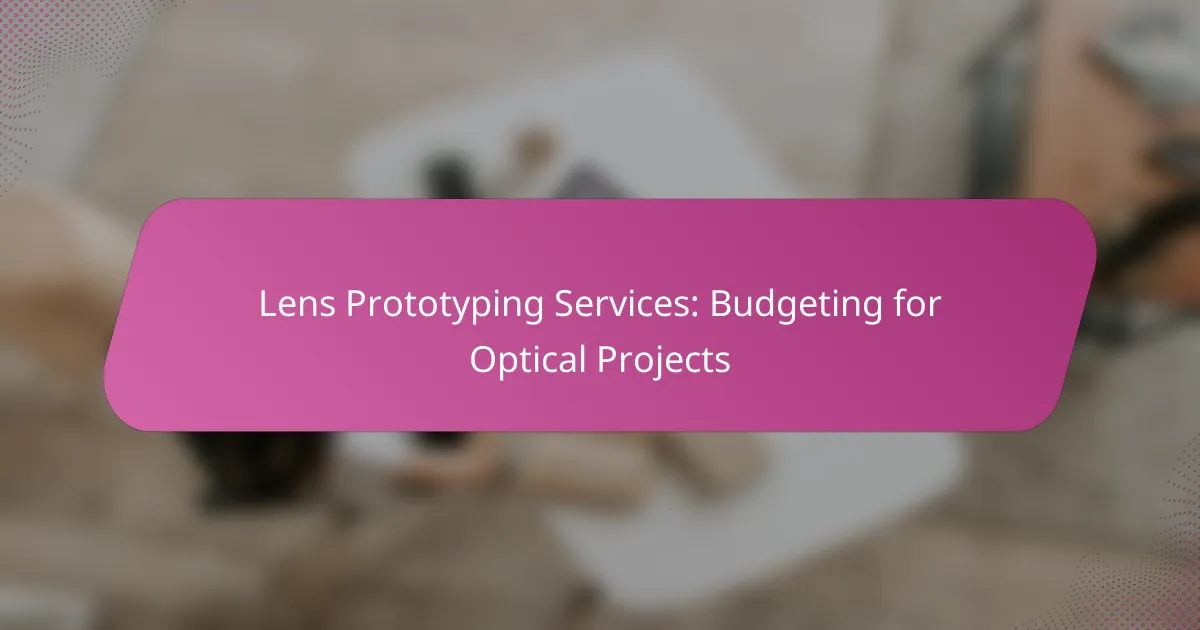For startups venturing into lens prototyping, finding the right balance between cost and quality is crucial. By prioritizing essential features and understanding the impact of material selection, production volume, and design complexity, startups can make informed decisions that meet market demands without exceeding their budgets. Choosing services that offer flexibility and rapid turnaround can further enhance the prototyping process, ensuring that the final product aligns with specific design requirements.
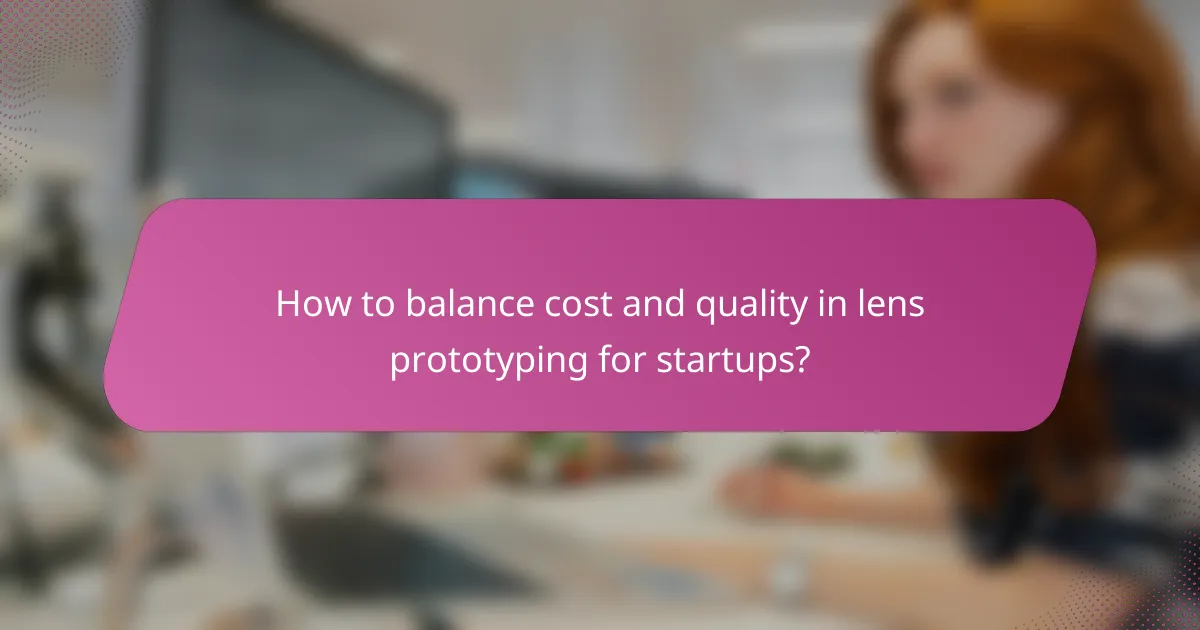
How to balance cost and quality in lens prototyping for startups?
Balancing cost and quality in lens prototyping requires a strategic approach that prioritizes essential features while managing expenses. Startups should focus on identifying key functionalities that meet market needs without overspending on unnecessary components.
Prioritize essential features
Identifying and prioritizing essential features is crucial for effective lens prototyping. Startups should focus on the core functionalities that differentiate their product in the market, such as optical clarity or durability, rather than adding numerous secondary features that may inflate costs.
Creating a feature matrix can help visualize which aspects are vital for the initial prototype. This approach ensures that resources are allocated efficiently, allowing for a more focused development process that meets customer expectations without excessive spending.
Utilize cost-effective materials
Choosing cost-effective materials is a key strategy for startups looking to manage prototyping costs. Materials such as polycarbonate or acrylic can provide good optical properties at a fraction of the price of high-end glass options.
Startups should evaluate the trade-offs between material costs and performance. For example, while cheaper materials may reduce initial expenses, they could affect the product’s long-term durability or user satisfaction. Testing various materials early in the prototyping phase can help find the right balance.
Implement iterative testing
Iterative testing is essential for refining lens prototypes while controlling costs. By conducting multiple rounds of testing and feedback, startups can identify issues early and make necessary adjustments without committing to expensive production runs.
Using rapid prototyping techniques, such as 3D printing, allows for quick iterations at lower costs. This method enables startups to gather user feedback and improve design before finalizing the product, ultimately leading to a higher quality outcome that aligns with budget constraints.
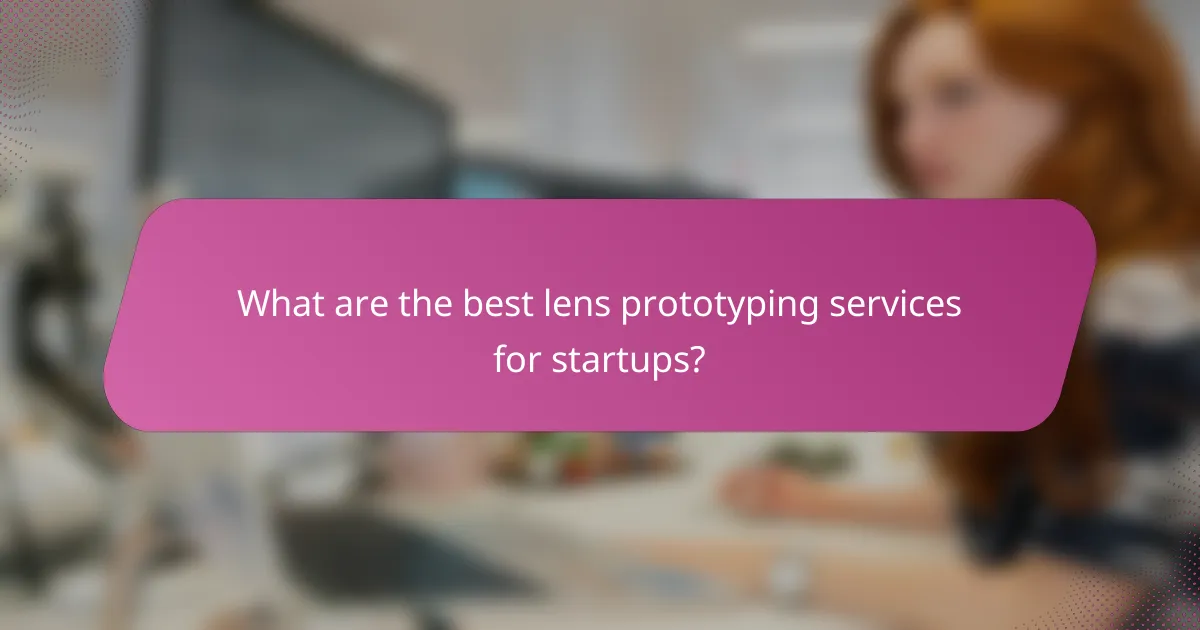
What are the best lens prototyping services for startups?
Startups seeking lens prototyping services should consider options that balance cost and quality effectively. The best services offer rapid turnaround times, flexibility in materials, and the ability to produce functional prototypes that meet specific design requirements.
LensProto
LensProto specializes in rapid prototyping for optical components, making it a strong choice for startups focused on lens design. They provide a range of materials and manufacturing techniques, allowing for quick iterations and adjustments based on feedback.
Startups can expect competitive pricing, typically in the low hundreds of USD for initial prototypes, depending on complexity. Their online platform simplifies the ordering process, making it easy to upload designs and receive quotes.
ProtoLabs
ProtoLabs is known for its fast turnaround and high-quality prototypes, catering to a variety of industries, including optics. They utilize advanced manufacturing technologies, such as CNC machining and injection molding, to produce precise lens prototypes.
Pricing can vary significantly based on the materials and processes chosen, often ranging from several hundred to a few thousand USD. Startups should leverage their online quoting tool to get a clear estimate before proceeding.
Fathom
Fathom offers a comprehensive suite of prototyping services, including 3D printing and CNC machining, which are ideal for lens prototypes. Their focus on low-volume production allows startups to test and refine their designs without committing to large batches.
The cost for prototypes can start in the low hundreds of USD, but can increase based on complexity and material choices. Startups should take advantage of Fathom’s design consultation services to optimize their prototypes for manufacturability and performance.

What factors influence lens prototyping costs?
Several factors significantly impact the costs associated with lens prototyping, including material selection, production volume, and design complexity. Understanding these elements can help startups make informed decisions that balance quality and affordability.
Material selection
The choice of materials for lens prototyping plays a crucial role in determining costs. High-quality optical materials, such as polycarbonate or high-index glass, can be more expensive but offer better performance and durability. Conversely, lower-cost materials may reduce initial expenses but could compromise the final product’s quality.
Startups should consider the specific requirements of their lenses, including optical clarity and scratch resistance, when selecting materials. A practical approach is to evaluate a range of materials and their costs to find a suitable balance between quality and budget.
Production volume
Production volume directly affects the cost per unit in lens prototyping. Generally, higher volumes lead to lower costs due to economies of scale, as setup and tooling costs are spread across more units. For example, producing hundreds of lenses can significantly reduce the cost per lens compared to producing a handful.
Startups should assess their market demand and consider initial production runs that align with their budget. It may be beneficial to start with smaller batches to test the market before committing to larger orders, thereby minimizing financial risk.
Design complexity
The complexity of the lens design is another critical factor influencing prototyping costs. Intricate designs with advanced features, such as aspheric surfaces or specialized coatings, require more sophisticated manufacturing processes, which can increase costs. Simple designs, on the other hand, are typically less expensive to produce.
Startups should evaluate whether the added complexity of a design is necessary for their target market. Simplifying designs where possible can help reduce costs while still meeting performance requirements. A careful balance between innovation and practicality is essential to keep expenses manageable.
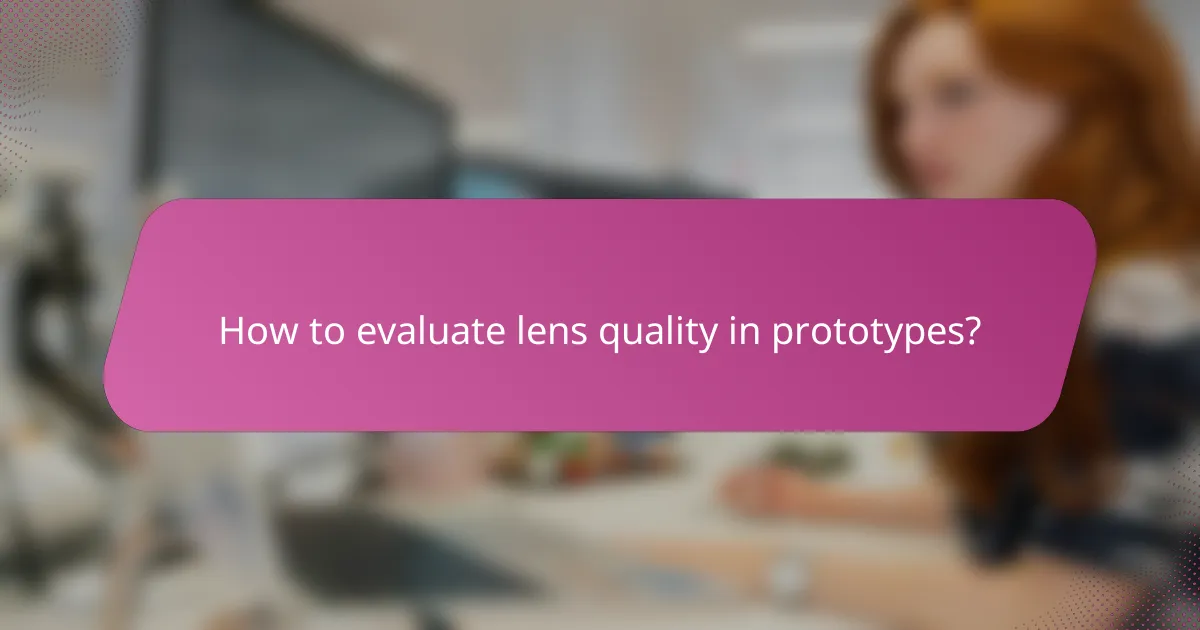
How to evaluate lens quality in prototypes?
To evaluate lens quality in prototypes, focus on optical performance, durability, and user feedback. Each of these aspects plays a crucial role in determining the overall effectiveness and reliability of the lens in practical applications.
Optical performance metrics
Optical performance metrics are essential for assessing how well a lens transmits light and produces clear images. Key metrics include resolution, contrast, and distortion levels. For instance, a lens with high resolution will provide sharper images, while low distortion is critical for maintaining image integrity.
When evaluating prototypes, consider using standardized tests such as MTF (Modulation Transfer Function) charts to compare performance across different designs. Aim for lenses that meet or exceed industry benchmarks to ensure quality.
Durability tests
Durability tests assess how well a lens can withstand physical stress and environmental factors. Common tests include impact resistance, scratch resistance, and moisture exposure. A lens that passes these tests is more likely to perform reliably in real-world conditions.
For startups, conducting accelerated aging tests can provide insights into long-term performance. This involves exposing the lens to extreme temperatures and humidity to simulate years of use in a short period.
User feedback
User feedback is invaluable for understanding how a lens performs in everyday situations. Collecting insights from initial users can highlight strengths and weaknesses that may not be apparent in laboratory tests. Surveys and focus groups can be effective methods for gathering this information.
Pay attention to specific comments regarding image quality, comfort, and usability. Adjustments based on user experiences can significantly enhance the final product and ensure it meets market needs.
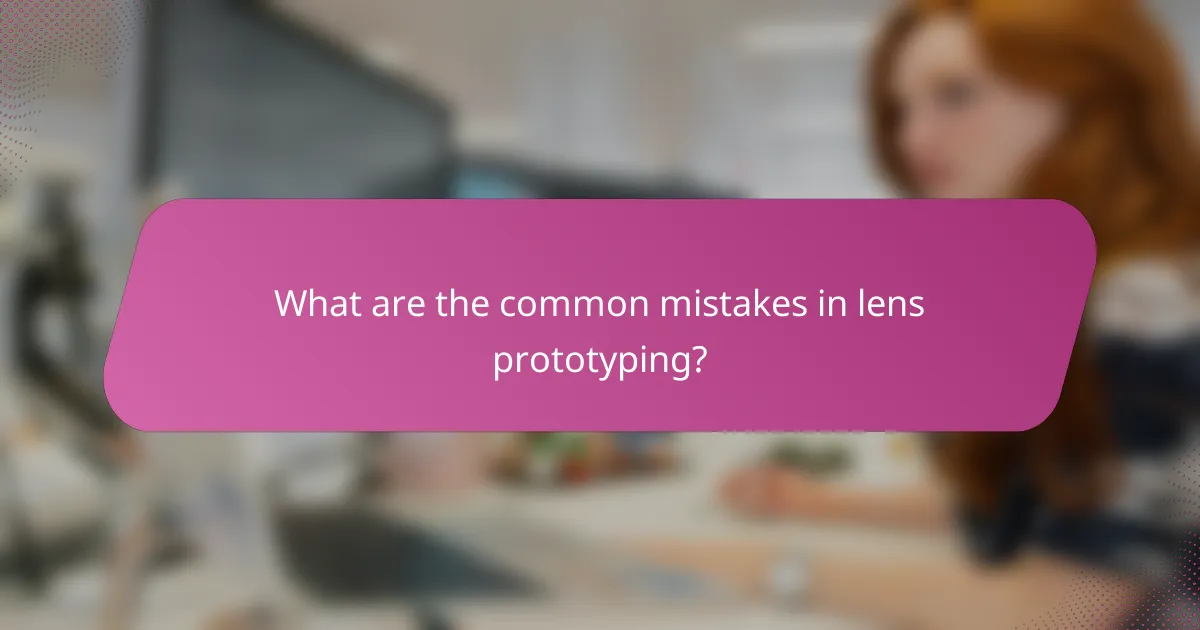
What are the common mistakes in lens prototyping?
Common mistakes in lens prototyping can lead to wasted resources and subpar products. Startups often overlook critical aspects such as user needs, testing phases, and cost estimations, which can significantly impact the success of their prototypes.
Neglecting user needs
Failing to prioritize user needs can result in prototypes that do not meet market demands. Startups should conduct thorough user research to understand their target audience’s preferences and pain points before beginning the prototyping process.
Engaging potential users early through surveys or focus groups can provide valuable insights. This feedback can guide design choices and ensure that the final product resonates with its intended users.
Overlooking testing phases
Skipping or minimizing testing phases can lead to critical flaws in the final product. Prototyping should include multiple iterations of testing to identify issues and gather user feedback effectively.
Implementing a structured testing schedule, such as alpha and beta testing, can help catch problems early. Aim for at least two rounds of testing to refine the lens design based on real-world usage and feedback.
Underestimating costs
Many startups underestimate the costs associated with lens prototyping, which can lead to budget overruns. It’s essential to account for materials, labor, and testing expenses when planning the budget.
Creating a detailed cost breakdown can help identify potential financial pitfalls. Consider setting aside a contingency fund of around 10-20% of the projected budget to cover unexpected expenses that may arise during the prototyping process.
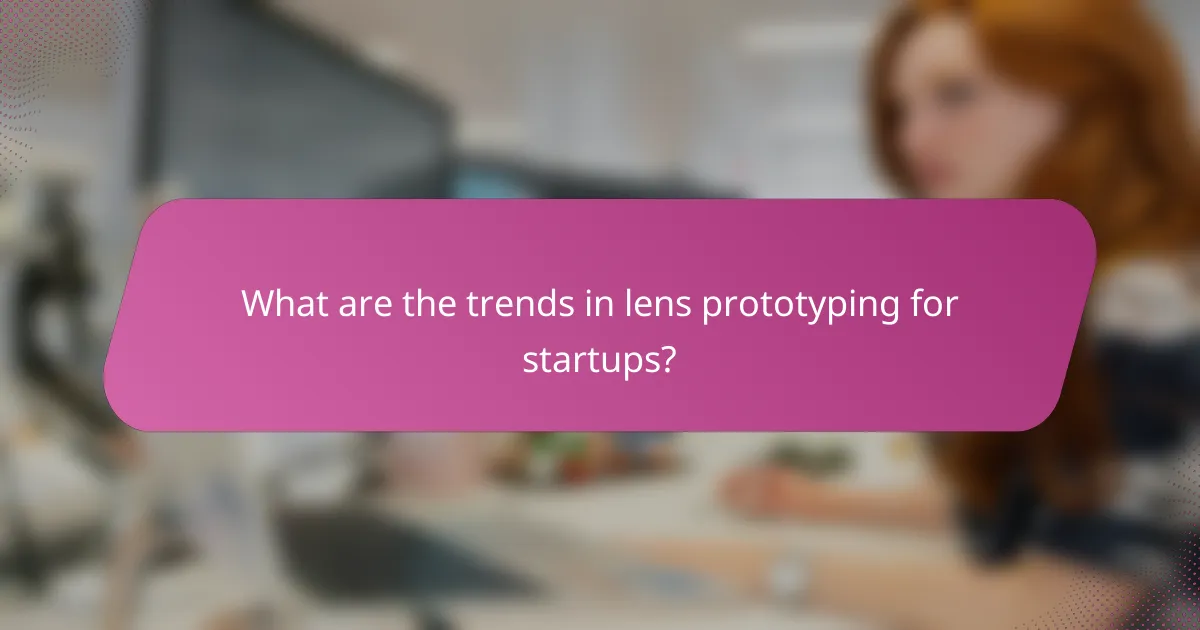
What are the trends in lens prototyping for startups?
Startups in the lens prototyping sector are increasingly adopting innovative technologies to balance cost and quality. Key trends include the use of advanced 3D printing techniques and a focus on rapid iteration to meet market demands efficiently.
3D printing advancements
3D printing has revolutionized lens prototyping by enabling rapid production and customization. This technology allows startups to create complex geometries and optical designs that were previously difficult or costly to achieve with traditional methods.
With advancements in materials and printing techniques, startups can produce prototypes in a matter of hours rather than days or weeks. This speed not only reduces costs but also allows for quicker testing and refinement of designs, which is crucial in a competitive market.
Startups should consider the trade-offs between different 3D printing technologies, such as SLA (Stereolithography) and FDM (Fused Deposition Modeling). While SLA offers higher precision for optical applications, FDM may be more cost-effective for initial prototypes. Evaluating the specific needs of the project can guide the choice of technology.
